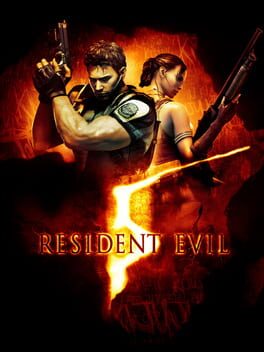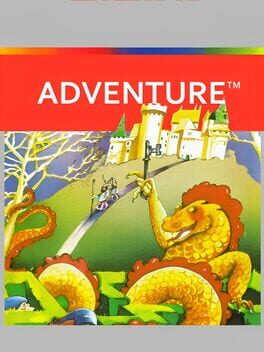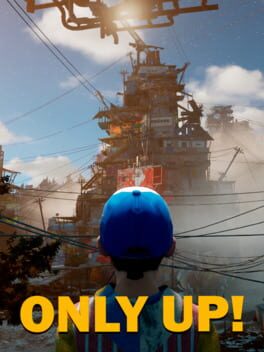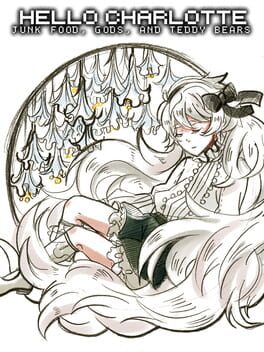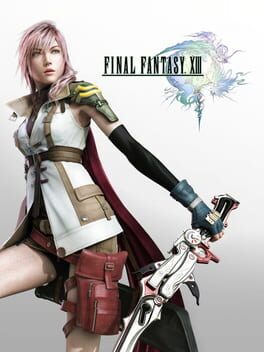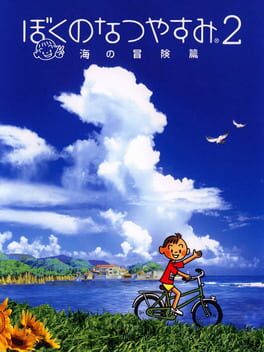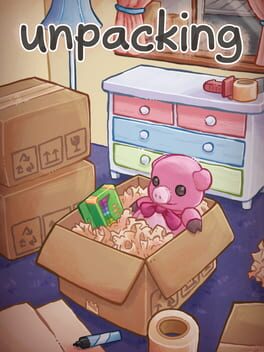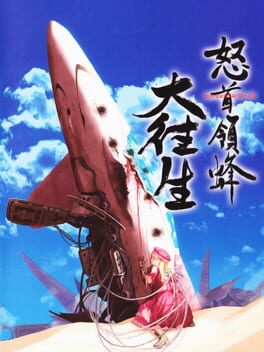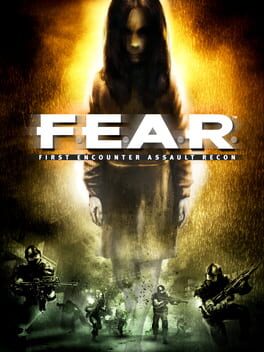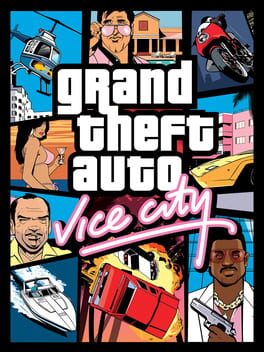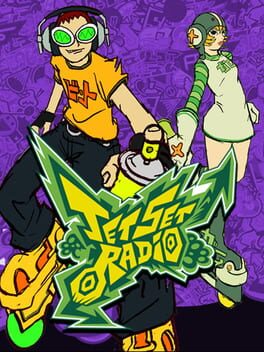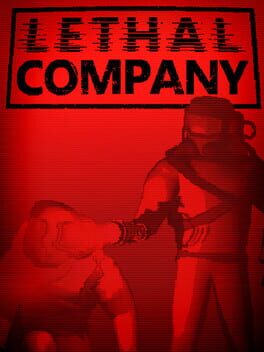rubenmg
2009
Normally, thinking about a sequel to Resident Evil 4 is thinking it to be as simple as copying the system again and being done, how could a bad game come out of there? Even better, smooth the system to focus on combat: more melee options and dynamic inventory management limited on what's important without stopping the action.
Turns out that it was also important to know how to design and place enemies and scenarios, to be put against the ropes depended not only on the system but in always feeling surrounded and having to reposition constantly. Because of this, Resident Evil 5 starts by looking at some of the best ideas of 4, the moment inspired by the first raid at the village appears shortly in an open survival arena where enemies will keep appearing. Obviously, it's a highlight, nothing more is needed to feel constantly cornered.
The way is lost at every other moment. Whether it's trying to take advantage of splitting up and covering your backs in co-op, fighting in a cramped incinerator against a monster almost immune to gunfire, or navigating the dark of the mines, the game doesn't come even close to the tension of its predecessor. On top of that, the slapstick tone is much more blurred, seeming almost accidental, as in the possibility to melee combo some enemies together with your partner. Casual exceptions aside, the hits have lost impact and the cinematography style, there is an identity crisis due to a mishmash of trends of the period between military shooter, giant aliens from Gears of War and Matrix scenes that do not fit at all with what Resident Evil 4 was. It seems that it wasn't as simple as replicating a system and hoping that everything else could hold up.
It's no surprise then that the best part is the mercenaries mode. If Resident Evil 5 looks at the village raid to build its best moment right out of the gate, it can also look at the mercenaries mode derived from that sequence. Here disappears the clumsiness of trying to confusingly replicate without understanding and without genius. It goes the roughest way, to survive enemy waves in the system that could not fail, even with the Frankenstein erratic mashups still well in sight.
Turns out that it was also important to know how to design and place enemies and scenarios, to be put against the ropes depended not only on the system but in always feeling surrounded and having to reposition constantly. Because of this, Resident Evil 5 starts by looking at some of the best ideas of 4, the moment inspired by the first raid at the village appears shortly in an open survival arena where enemies will keep appearing. Obviously, it's a highlight, nothing more is needed to feel constantly cornered.
The way is lost at every other moment. Whether it's trying to take advantage of splitting up and covering your backs in co-op, fighting in a cramped incinerator against a monster almost immune to gunfire, or navigating the dark of the mines, the game doesn't come even close to the tension of its predecessor. On top of that, the slapstick tone is much more blurred, seeming almost accidental, as in the possibility to melee combo some enemies together with your partner. Casual exceptions aside, the hits have lost impact and the cinematography style, there is an identity crisis due to a mishmash of trends of the period between military shooter, giant aliens from Gears of War and Matrix scenes that do not fit at all with what Resident Evil 4 was. It seems that it wasn't as simple as replicating a system and hoping that everything else could hold up.
It's no surprise then that the best part is the mercenaries mode. If Resident Evil 5 looks at the village raid to build its best moment right out of the gate, it can also look at the mercenaries mode derived from that sequence. Here disappears the clumsiness of trying to confusingly replicate without understanding and without genius. It goes the roughest way, to survive enemy waves in the system that could not fail, even with the Frankenstein erratic mashups still well in sight.
1979
The first great triumph of purely videogame adventure is also one of the first great triumphs of abstraction. The power of Adventure goes beyond the evocative, which is no menial thing, but embraces a wholly abstract language to build a world far more robust and plausible than any other that actively attempts to imitate reality.
It is curious for Colossal Cave Adventure to be one of the main sources of inspiration. It isn’t unexpected that it was taken as a source, as there must not have been many successful examples at the time in the search of adventure, but in how the paths diverged, almost reactionary. Adventure gets rid of words altogether to commit to a total physical world. Consequently, contrary to what abandoning immediate realism may imply, the world of Adventure becomes much more intuitive and believable. There is no longer the conflict of having to puzzle out what kind of commands a word processor is able to understand or not in order to move forward, there is instead the discovery of a system that, while allowing itself to be much simpler, is also much more transparent.
You can grab objects and drop them, birds can also carry (and steal) objects, magnets attract objects contained in the same screen, bridges allow you to cross walls (or whatever they are)... All these rules are not broken at any time and lead to a world that, as Tim Schafer says in the Atari 50 Collection, seems alive, that is able to exist even if the player is not present. Thus, birds can carry away a dragon, a key, a magnet attracting a key, or the player can peek sections of the world while traveling defeated in the belly of a dragon. This contributes in two areas: one of wit from being able to use the available elements in our favor to avoid or tackle obstacles, and another of unpredictability, chaos and life, because given the rules the dislocations of all the elements throughout the map during the game are more than certain. There is always a factor that requires improvisation while continuing the discovery.
It’s difficult to explain how well Adventure applies multiple abstractions to its advantage since many of them have been irremediably absorbed by everything that would come after. As Terry Cavanagh understood in Mr. Platformer, paying homage to similar early titles such as Atari 2600’s Pitfall or Montezuma’s Revenge, these first videogame steps that began to understand abstraction also began to use it as a liberating language. Where entering through a door into a fortress was teleporting into a labyrinth, moving past the edge of the screen was discovering a new piece of the world and doing so repeatedly on the same side discovered a spatially impossible loop.
It's a process of genuine discovery because it doesn’t attempt to clumsily replicate reality, but rather to discover new ways of navigating, interacting and understanding a world. And in the face of all these new, impossible and abstract forms remains a strong, direct and unmistakable sensation: Adventure.
It is curious for Colossal Cave Adventure to be one of the main sources of inspiration. It isn’t unexpected that it was taken as a source, as there must not have been many successful examples at the time in the search of adventure, but in how the paths diverged, almost reactionary. Adventure gets rid of words altogether to commit to a total physical world. Consequently, contrary to what abandoning immediate realism may imply, the world of Adventure becomes much more intuitive and believable. There is no longer the conflict of having to puzzle out what kind of commands a word processor is able to understand or not in order to move forward, there is instead the discovery of a system that, while allowing itself to be much simpler, is also much more transparent.
You can grab objects and drop them, birds can also carry (and steal) objects, magnets attract objects contained in the same screen, bridges allow you to cross walls (or whatever they are)... All these rules are not broken at any time and lead to a world that, as Tim Schafer says in the Atari 50 Collection, seems alive, that is able to exist even if the player is not present. Thus, birds can carry away a dragon, a key, a magnet attracting a key, or the player can peek sections of the world while traveling defeated in the belly of a dragon. This contributes in two areas: one of wit from being able to use the available elements in our favor to avoid or tackle obstacles, and another of unpredictability, chaos and life, because given the rules the dislocations of all the elements throughout the map during the game are more than certain. There is always a factor that requires improvisation while continuing the discovery.
It’s difficult to explain how well Adventure applies multiple abstractions to its advantage since many of them have been irremediably absorbed by everything that would come after. As Terry Cavanagh understood in Mr. Platformer, paying homage to similar early titles such as Atari 2600’s Pitfall or Montezuma’s Revenge, these first videogame steps that began to understand abstraction also began to use it as a liberating language. Where entering through a door into a fortress was teleporting into a labyrinth, moving past the edge of the screen was discovering a new piece of the world and doing so repeatedly on the same side discovered a spatially impossible loop.
It's a process of genuine discovery because it doesn’t attempt to clumsily replicate reality, but rather to discover new ways of navigating, interacting and understanding a world. And in the face of all these new, impossible and abstract forms remains a strong, direct and unmistakable sensation: Adventure.
2023
It may look like a cheap move to compare Only Up to Getting Over It, in which I commit the error of asking for a game to be something that it isn't. I think it’s interesting to compare where it comes from (as the influence is clear, and even explicit) just as it would be fair to compare Getting Over It to Sexy Hiking.
What Bennet Foddy saw in its inspiration was that the seed towards new ways of conception could be found in places that embraced the unconventional, that didn't care, or even preferred, to be "janky", as it allowed for the freedom to create its own discourse without having to answer to any expectations. His mountain of "digital junk" in the form of collected free assets wasn't (just) an ironic commentary on how everything online is just waste nowadays (I know there are some connotations about it, but they are more bridges towards other more interesting ideas). What was valuable in its collage of a map was to see through all that worthless collection and carefully select and position everything in a way that found a new meaning. To appreciate the shape of a lamp through the brutality of the hammer by moving it as carefully as an artist's brush.
Only Up seems to accentuate the collage of jank. Now it's a longer, fully 3D map, the companion voice is automated and even the movement itself is, or looks like, a preset moveset from any modern 3D engine. In this movement that clings into collisions the same no matter the shape, the objects matter no more, a lamp is just another box of a different size. The length of the game is less defined by the particular focus on the detail and more on repeating mechanical and repetitive motions, continuing to believe in a tendency where quantity beats quality, or at least carefulness. Where Getting Over It found meaning in its assets by making them an integral part of its revolutionary new take on platformers, Only Up only gets it in an even weaker comment of modern waste and a shield of irony.
If you think that the movement is uninspired, the response is that it's a purposeful ironic comment. If the lack of ideas to make an interesting platformer keeps appearing again and again, it isn’t a signal that there was no purpose to make a good game, but another ironic comment.
Getting Over It found value in everything through the delicate strokes of the hammer that moved through its mountain. Only Up believes that nothing of value can be done, we are at a point of no return and movement cannot be conceived as something interesting, it's just a standard to be mocked about. The worst part is that the wave of infinite clones is already feeding its empty argument.
What Bennet Foddy saw in its inspiration was that the seed towards new ways of conception could be found in places that embraced the unconventional, that didn't care, or even preferred, to be "janky", as it allowed for the freedom to create its own discourse without having to answer to any expectations. His mountain of "digital junk" in the form of collected free assets wasn't (just) an ironic commentary on how everything online is just waste nowadays (I know there are some connotations about it, but they are more bridges towards other more interesting ideas). What was valuable in its collage of a map was to see through all that worthless collection and carefully select and position everything in a way that found a new meaning. To appreciate the shape of a lamp through the brutality of the hammer by moving it as carefully as an artist's brush.
Only Up seems to accentuate the collage of jank. Now it's a longer, fully 3D map, the companion voice is automated and even the movement itself is, or looks like, a preset moveset from any modern 3D engine. In this movement that clings into collisions the same no matter the shape, the objects matter no more, a lamp is just another box of a different size. The length of the game is less defined by the particular focus on the detail and more on repeating mechanical and repetitive motions, continuing to believe in a tendency where quantity beats quality, or at least carefulness. Where Getting Over It found meaning in its assets by making them an integral part of its revolutionary new take on platformers, Only Up only gets it in an even weaker comment of modern waste and a shield of irony.
If you think that the movement is uninspired, the response is that it's a purposeful ironic comment. If the lack of ideas to make an interesting platformer keeps appearing again and again, it isn’t a signal that there was no purpose to make a good game, but another ironic comment.
Getting Over It found value in everything through the delicate strokes of the hammer that moved through its mountain. Only Up believes that nothing of value can be done, we are at a point of no return and movement cannot be conceived as something interesting, it's just a standard to be mocked about. The worst part is that the wave of infinite clones is already feeding its empty argument.
I’m glad that people connected with Charlotte later on, but I miss something that got lost since this first game. May sound typical for this kind of RPG maker games, but to me the game is entirely about the peculiar and imaginative perception of the world from Charlotte’s view in videogame language.
If I’m allowed to make a guess, I’m pretty sure that most people who grew up with videogames being quite present in their lives have dreamt in videogame terms (specially as children, but also as adults), even daydreaming about them. Something similar must have happened with cinema and TV (camera angles, cuts and such being present in dreams and even when recalling memories) and Hello Charlotte has a lot of this new influence on perception. Her imaginary friend is someone never present that may seem (and may be) a fourth wall breaking reference to the player or just her thinking that she’s a videogame character. The multiple deaths act more as what ifs, what if the world ended if I touch this, what if the scary bear impales me. It may seem insensitive to think about these images, but to me it’s kind of liberating from the perspective of Charlotte, just her letting her mind express herself and experiment knowing that a bad end can always be rewinded.
What’s interesting about the mixed perception between videogames and real life is the point that I miss in the next two games. This perception happens (partially) as a way to connect very designed, even standardized simple rules and the bigger complexities of the real world. Think about little kids asking about “who are the good and bad guys” like if everything was a cartoon, not out of bad intent, but to try and grasp something unknown to them on their terms. The first Hello Charlotte is a quite well achived abstract adventure in the conventional sense with a lot of personal quirks in its presentation that lets glances at Charlotte’s deepest worries. If I’m allowed to take a picky example, Episode 2 represents Charlotte social troubles in school through RPG Maker standard combats. The first game is the imagination running free while still being inevitably attached to who Charlotte is and her life, the second one feels like a failed attempt to represent social anxiety in those terms, ignoring both the way that is really perceived and how the imagination tries to make some sense out of it.
My biggest shame is that the dreamy yet way less abstract influence in the next games does come occasionally incredibly close to my dreamy perceptions, apart from the cinema and videogames presence. The mix between everyday places with something always off, but something that seems normal unless you stop to think about it, and the meaning that such small changes carry (like everything about the school structure, for instance think about how the way to it requires the students to take a mortal drop into a mattress, a process that makes sense but only under a specific non sensical logic). In some way, a perfect match about videogames' constant failures at replicating reality by nature and yet the convincing sense that their obvious fakeness brings. I appreciate the attempts to try to have more focused thematic ideas later on, but while I never found my footing in those, I always yearned for that more natural expression of intuition from the subconscious. Charlotte lets herself see without noticing while dreaming of being herself.
If I’m allowed to make a guess, I’m pretty sure that most people who grew up with videogames being quite present in their lives have dreamt in videogame terms (specially as children, but also as adults), even daydreaming about them. Something similar must have happened with cinema and TV (camera angles, cuts and such being present in dreams and even when recalling memories) and Hello Charlotte has a lot of this new influence on perception. Her imaginary friend is someone never present that may seem (and may be) a fourth wall breaking reference to the player or just her thinking that she’s a videogame character. The multiple deaths act more as what ifs, what if the world ended if I touch this, what if the scary bear impales me. It may seem insensitive to think about these images, but to me it’s kind of liberating from the perspective of Charlotte, just her letting her mind express herself and experiment knowing that a bad end can always be rewinded.
What’s interesting about the mixed perception between videogames and real life is the point that I miss in the next two games. This perception happens (partially) as a way to connect very designed, even standardized simple rules and the bigger complexities of the real world. Think about little kids asking about “who are the good and bad guys” like if everything was a cartoon, not out of bad intent, but to try and grasp something unknown to them on their terms. The first Hello Charlotte is a quite well achived abstract adventure in the conventional sense with a lot of personal quirks in its presentation that lets glances at Charlotte’s deepest worries. If I’m allowed to take a picky example, Episode 2 represents Charlotte social troubles in school through RPG Maker standard combats. The first game is the imagination running free while still being inevitably attached to who Charlotte is and her life, the second one feels like a failed attempt to represent social anxiety in those terms, ignoring both the way that is really perceived and how the imagination tries to make some sense out of it.
My biggest shame is that the dreamy yet way less abstract influence in the next games does come occasionally incredibly close to my dreamy perceptions, apart from the cinema and videogames presence. The mix between everyday places with something always off, but something that seems normal unless you stop to think about it, and the meaning that such small changes carry (like everything about the school structure, for instance think about how the way to it requires the students to take a mortal drop into a mattress, a process that makes sense but only under a specific non sensical logic). In some way, a perfect match about videogames' constant failures at replicating reality by nature and yet the convincing sense that their obvious fakeness brings. I appreciate the attempts to try to have more focused thematic ideas later on, but while I never found my footing in those, I always yearned for that more natural expression of intuition from the subconscious. Charlotte lets herself see without noticing while dreaming of being herself.
2016
As someone who doesn't appreciate the original that much nowadays, this made me retroactively reconsider the qualities of the first game.
Comparisons are odious, but not only this is (partially) a remake, the game keeps throwing references to past entries, so ignoring the context would really need a lot of will. The weird thing is that the game seems to take the worst from the first entry and throw out the good stuff. I didn't notice until playing this one, but the original Ratchet and Clank had some genuinely funny dialogues, every scene managed to add a bit of flavor to the overall adventure. In the new game it seems like nobody wanted to develop this, everyone sounds bored, the infobots videos are all forgettable, you'll curse the guy who invented dialogs during gameplay. Hell, I don't think that Ratchet and Clank actually talk between themselves more than 4 or 5 times, do they even know each other by the end of the adventure?
I would try to keep the visual aspect on the "personal" terrain, I still think that the original game made environments that suggested more life beyond the game horizons than this generic sci-fi filtered look, but that may be memories from when I was a kid. What is not a trick from nostalgia is how the new visual style is straightforward eye-painful. Especially in the night levels, the led saturation makes the game really hard to look at for a few minutes, like trying to read a scenary oversaturated with junk wasn't hard enough.
What ends up bothering me the most is how the game shows briefly some good qualities in ways that never dares to take seriously. Using an unreliable narrator could bring up some nice variety and surprises, it is hinted in a joke where Quark says: "and then a dinosaur appeared" but is quickly cut. Why not show a dinosaur? Traveling between planets should already give enough freedom to put whatever funny nonsense comes to mind. I was also surprised with the level where you can freely fly and explore (I think the exploration is what I liked the most). It's a nice reinterpretation of Clank's whateveriscalled rocket power up, but then the game goes and shuts that idea into a single planet and a few more punctual exceptions. When some fun is accidentally added there is always a quick response with an apology.
Comparisons are odious, but not only this is (partially) a remake, the game keeps throwing references to past entries, so ignoring the context would really need a lot of will. The weird thing is that the game seems to take the worst from the first entry and throw out the good stuff. I didn't notice until playing this one, but the original Ratchet and Clank had some genuinely funny dialogues, every scene managed to add a bit of flavor to the overall adventure. In the new game it seems like nobody wanted to develop this, everyone sounds bored, the infobots videos are all forgettable, you'll curse the guy who invented dialogs during gameplay. Hell, I don't think that Ratchet and Clank actually talk between themselves more than 4 or 5 times, do they even know each other by the end of the adventure?
I would try to keep the visual aspect on the "personal" terrain, I still think that the original game made environments that suggested more life beyond the game horizons than this generic sci-fi filtered look, but that may be memories from when I was a kid. What is not a trick from nostalgia is how the new visual style is straightforward eye-painful. Especially in the night levels, the led saturation makes the game really hard to look at for a few minutes, like trying to read a scenary oversaturated with junk wasn't hard enough.
What ends up bothering me the most is how the game shows briefly some good qualities in ways that never dares to take seriously. Using an unreliable narrator could bring up some nice variety and surprises, it is hinted in a joke where Quark says: "and then a dinosaur appeared" but is quickly cut. Why not show a dinosaur? Traveling between planets should already give enough freedom to put whatever funny nonsense comes to mind. I was also surprised with the level where you can freely fly and explore (I think the exploration is what I liked the most). It's a nice reinterpretation of Clank's whateveriscalled rocket power up, but then the game goes and shuts that idea into a single planet and a few more punctual exceptions. When some fun is accidentally added there is always a quick response with an apology.
2009
In theory, in spirit, in abstraction, choose the inexact term of your preference, I really like this. The game honestly treasures its silly adolescent spirit, a spirit about people wanting to save the world from its, supposedly, destined doom. Not exactly the most original thing in the universe right (though I won’t stop liking it because of that), but there’s a bit more.
The reason why the group ends up deciding to attempt to defy a greater power, a colossal global act, takes root in a very personal and intimate place. It all starts from the desire of Lightning and Snow to save Serah, their sister and bride to be respectively. It’s not only them, Hope needs to find a way to move on after losing his mother and the other three characters also have the root of their cause in someone close, though they hide it for some time. The thing is that at the start of the adventure all of them are blinded and need to put the blame on whatever they have at hand. From self repulsion to putting all the weight in someone concrete that, even if still has some responsibility to account, isn’t the truly villainous force.
It’s not hard to understand why they point fingers so easily. The real culprit here is a more abstract force beyond any human, easy to guess they end up fighting godlike figures, because of course they do, though not necessarily religious gods. There are clear influences of religion here and there, but these forces are embodied in machinery monstrosities, beings that can literally produce food and other essential goods to keep humans happy. They also can curse the people in order to carry their will. At the moment that this curse is cast there are only two options: you fail at your abstractly told task and turn into a zombie or you succeed and gain eternal life aka turn into a crystal forever. A curse for eternity.
Talking about killing gods may sound like getting into unbearable pretentiousness (partially true, I guess, but also cool) that in reality ends up leading nowhere, but it never really feels like the game is trying to be smarter than it is. It’s not so much about screaming out loud about the possibility of change through a serious way, but about what comes before, the burning desire of that possibility existing. To believe in miracles just before fighting to make them come true. It is the moment the cast starts realizing that to save Serah or anyone dear to them the only real way is to fight for that greater shift that saves everyone.
Unfortunately, the game has many problems. I could start with everything related to combats, in short, they try something but it isn’t compromised enough nor good enough and ends up being a mess. In any case, what really keeps me from liking it is this messiness in other places.
It’s surprising to see how Hope's conflict with the loss of his mother is considerably well handled, letting see what goes on until he can come clear with himself and then have Sazh conflict. In about 30 minutes (of a really long game) a grown up guy, not a child like Hope, gets in a similar situation in which he blames someone that is just very partially at fault, then realizes that revenge will solve nothing, then thinks about ending his life in a small cliffhanger and the next time he appears he’s all cool everything clear. In a flashback showing Lightning’s birthday, the only moment where she tried to stop being a soldier and act as a human being, the gift that she receives from her just-cursed-about-to-be-married dear sister is… a combat knife.
Even the moments that work to some extent fall short of what I feel they should be. Watching Snow and Serah being together is cute, but with a couple around twenty years old planning on building a family and assuring that not even godly curses will stop their love, “cute” shouldn’t be enough. And it’s like that through the whole game, I keep coming back to its concepts, to the burning passion that is in its abstraction, but when I reach my hand to try to get a handle on anything, the game is, ironically, incapable of truly crystallizing.
The reason why the group ends up deciding to attempt to defy a greater power, a colossal global act, takes root in a very personal and intimate place. It all starts from the desire of Lightning and Snow to save Serah, their sister and bride to be respectively. It’s not only them, Hope needs to find a way to move on after losing his mother and the other three characters also have the root of their cause in someone close, though they hide it for some time. The thing is that at the start of the adventure all of them are blinded and need to put the blame on whatever they have at hand. From self repulsion to putting all the weight in someone concrete that, even if still has some responsibility to account, isn’t the truly villainous force.
It’s not hard to understand why they point fingers so easily. The real culprit here is a more abstract force beyond any human, easy to guess they end up fighting godlike figures, because of course they do, though not necessarily religious gods. There are clear influences of religion here and there, but these forces are embodied in machinery monstrosities, beings that can literally produce food and other essential goods to keep humans happy. They also can curse the people in order to carry their will. At the moment that this curse is cast there are only two options: you fail at your abstractly told task and turn into a zombie or you succeed and gain eternal life aka turn into a crystal forever. A curse for eternity.
Talking about killing gods may sound like getting into unbearable pretentiousness (partially true, I guess, but also cool) that in reality ends up leading nowhere, but it never really feels like the game is trying to be smarter than it is. It’s not so much about screaming out loud about the possibility of change through a serious way, but about what comes before, the burning desire of that possibility existing. To believe in miracles just before fighting to make them come true. It is the moment the cast starts realizing that to save Serah or anyone dear to them the only real way is to fight for that greater shift that saves everyone.
Unfortunately, the game has many problems. I could start with everything related to combats, in short, they try something but it isn’t compromised enough nor good enough and ends up being a mess. In any case, what really keeps me from liking it is this messiness in other places.
It’s surprising to see how Hope's conflict with the loss of his mother is considerably well handled, letting see what goes on until he can come clear with himself and then have Sazh conflict. In about 30 minutes (of a really long game) a grown up guy, not a child like Hope, gets in a similar situation in which he blames someone that is just very partially at fault, then realizes that revenge will solve nothing, then thinks about ending his life in a small cliffhanger and the next time he appears he’s all cool everything clear. In a flashback showing Lightning’s birthday, the only moment where she tried to stop being a soldier and act as a human being, the gift that she receives from her just-cursed-about-to-be-married dear sister is… a combat knife.
Even the moments that work to some extent fall short of what I feel they should be. Watching Snow and Serah being together is cute, but with a couple around twenty years old planning on building a family and assuring that not even godly curses will stop their love, “cute” shouldn’t be enough. And it’s like that through the whole game, I keep coming back to its concepts, to the burning passion that is in its abstraction, but when I reach my hand to try to get a handle on anything, the game is, ironically, incapable of truly crystallizing.
To be honest, I didn't exactly come in with my arms wide open. The fears of a formally continuist sequel of something that was very expressive because its own peculiar use of its forms increased shortly after starting. A setting to choose how long you want the day to be, collectibles around the map, a character that tells you where to see the events of each day, afraid of giving you back freedom in a larger world, overall details that seem treated with less care and a feeling of experiencing the same but worse. It's a shame that every time the game tries to awkwardly recall the intentions of its predecessor, it pales considerably (one clear instance: the previously essential narrator is now dispensable in the few arbitrary moments it appears).
Luckily, it takes just a few days to see that the direction taken is right. The facts that the protagonist's father never appears, that the plot of the future sibling remains in the background, or that the reminiscing aspect of the tale is anecdotic are no coincidence. The form, weighed down by losing part of its meaning, becomes a perfect vehicle to explore a more passive exploration of the surrounding drama.
Here Boku does not so much embody a reflexive portrait of childhood and growth, as he is more a supporting device for the rest of the cast. Accordingly, the most dramatically charged plots revolve less around Boku's family and more around the neighbors and visitors. These take advantage of the kid's innocent and outsider approach to deal with a common yet always specific issue: yearn. Yearn because of the distance between mother and daughter, between father and son, between lovers, between Earth and outer space, between past and present and future, between the world of humans and the one that is not ours, between life and what lies beyond. And the fears that all of these yearnings may never be answered.
That most of the conflicts end up in an open ended bittersweet quiet note resonates with the setting of the small coastal village. A place to get away from and to be taken away from the world. The ever-present sound of the waves, which inevitably move these desires in the tide just as the moon changes phase in the last shot of each day.
It’s not that Boku's appearance solves all these yearnings, but his mere interest in observing the world around him and serving as a confessional escape mechanism at least alleviates the pain. The game takes a passive stance where listening to one another is the greatest act of kindness, where what little evil appears to exist in the world has nothing but a noble and melancholic origin. Who knows what the future may hold, what to do but to hope for the best and reach for our hands within the tide.
Luckily, it takes just a few days to see that the direction taken is right. The facts that the protagonist's father never appears, that the plot of the future sibling remains in the background, or that the reminiscing aspect of the tale is anecdotic are no coincidence. The form, weighed down by losing part of its meaning, becomes a perfect vehicle to explore a more passive exploration of the surrounding drama.
Here Boku does not so much embody a reflexive portrait of childhood and growth, as he is more a supporting device for the rest of the cast. Accordingly, the most dramatically charged plots revolve less around Boku's family and more around the neighbors and visitors. These take advantage of the kid's innocent and outsider approach to deal with a common yet always specific issue: yearn. Yearn because of the distance between mother and daughter, between father and son, between lovers, between Earth and outer space, between past and present and future, between the world of humans and the one that is not ours, between life and what lies beyond. And the fears that all of these yearnings may never be answered.
That most of the conflicts end up in an open ended bittersweet quiet note resonates with the setting of the small coastal village. A place to get away from and to be taken away from the world. The ever-present sound of the waves, which inevitably move these desires in the tide just as the moon changes phase in the last shot of each day.
It’s not that Boku's appearance solves all these yearnings, but his mere interest in observing the world around him and serving as a confessional escape mechanism at least alleviates the pain. The game takes a passive stance where listening to one another is the greatest act of kindness, where what little evil appears to exist in the world has nothing but a noble and melancholic origin. Who knows what the future may hold, what to do but to hope for the best and reach for our hands within the tide.
2021
Don’t like to go for the “can relate” since I think anything can resonate with anyone despite not having anything in common. The thing that is making me wonder about Unpacking is that there was a single yet very strong “can relate” moment in the game, even when the situations are not that similar, while the game is generally unrelatable to me.
In short, right now I’m the opposite of this game. I have not moved a lot through my life, nor even done big rearrangements at home either, and I try to keep as few things as possible. So here I am playing a game about someone who has moved like 8 times and likes to keep a lot of books, games, consoles, figures, plushies… There are some more mundane things to unpack too, but the core is pretty clearly those things that tell about your hobbies, and maybe about you.
Sticking with my thinking that not being relatable does not matter that much, the problem is in what is supposed to be told about someone or not. And yeah, I know plenty of things about what the protagonist of the game likes, her hobbies, some of her aspirations (professional or personal), and even about some of the bigger events of her life… in other words, I don’t know that person. Knowing what someone likes, that is knowing them superficially, or even a bit of what they have gone through is a good entry point for establishing a deeper understanding, and just that. All of these very strong attachments to superficial characteristics are more common nowadays for a lot of factors, in an era when you can come to contact with millions of people, it’s easier to define someone for what they like, the fastest way possible, and to want to be defined by the hobbies that interest you most. All of that is natural, and again the problem is not so much in establishing a first contact through that but in being incapable of reaching further on.
What kept me thinking a bit is that in the last level, there is one very specific room that caused the exact opposite reaction than the rest of the game, a single scene where I could completely relate in the perfect moment. Ironically, a moment that does not tell anything about no one, in this one not even the preferences of the protagonist are important, but a moment that talks more about the impact in your life that such a thing causes where even the necessity of preparing a room is emotional. Maybe the key of Unpacking is in welcoming the changes, wanted or not… but after the moment I liked so much I spent 10 minutes trying to discover where some little red thing was supposed to fit for our protagonist's taste.
In short, right now I’m the opposite of this game. I have not moved a lot through my life, nor even done big rearrangements at home either, and I try to keep as few things as possible. So here I am playing a game about someone who has moved like 8 times and likes to keep a lot of books, games, consoles, figures, plushies… There are some more mundane things to unpack too, but the core is pretty clearly those things that tell about your hobbies, and maybe about you.
Sticking with my thinking that not being relatable does not matter that much, the problem is in what is supposed to be told about someone or not. And yeah, I know plenty of things about what the protagonist of the game likes, her hobbies, some of her aspirations (professional or personal), and even about some of the bigger events of her life… in other words, I don’t know that person. Knowing what someone likes, that is knowing them superficially, or even a bit of what they have gone through is a good entry point for establishing a deeper understanding, and just that. All of these very strong attachments to superficial characteristics are more common nowadays for a lot of factors, in an era when you can come to contact with millions of people, it’s easier to define someone for what they like, the fastest way possible, and to want to be defined by the hobbies that interest you most. All of that is natural, and again the problem is not so much in establishing a first contact through that but in being incapable of reaching further on.
What kept me thinking a bit is that in the last level, there is one very specific room that caused the exact opposite reaction than the rest of the game, a single scene where I could completely relate in the perfect moment. Ironically, a moment that does not tell anything about no one, in this one not even the preferences of the protagonist are important, but a moment that talks more about the impact in your life that such a thing causes where even the necessity of preparing a room is emotional. Maybe the key of Unpacking is in welcoming the changes, wanted or not… but after the moment I liked so much I spent 10 minutes trying to discover where some little red thing was supposed to fit for our protagonist's taste.
2002
It's not that hard to make a bullet hell that puts you on the tightrope, much less a difficult one. It's enough to fill the screen of bullets with any excuse, the natural reaction will be to feel overwhelmed looking for the few safe spots at hand. What is hard to do is to achieve this level of creativity and elegance.
It is not only that DaiOuJou is the summit (or at least one of them) of a very specific style (danmaku) developed by a very specific circle (CAVE, starting from the impulse left by Toaplan and other descendants such as Raizing or Takumi) or a very specific person (Tsuneki Ikeda, who had been defining his style here for more than a decade since his beginnings in Toaplan), but it is a nonstop of ideas that, always maintaining a stylistic cohesion, keep each playthrough fresh because of its radical approach variations.
Something as simple, satisfying and seen afterwards as the sequence of giant enemies constantly canceling bullets when destroyed here is nothing more than a section of a level. Getting across between bullets, an easy method to achieve tension as seen in Mushihimesama Futari, a game a bit exceeding in this resource, achieves elegance by building on varied layers of bullet sweeps. A clear example is the wasp section of the fifth level. Not only stands out because of making the small enemies follow a very peculiar rail movement, or because of their alternative appearances covering the entire width of the game, or because of being protected by giant wasps that serve as a shield and as another layer of bullets to the obstacle course, but stands out because of the creativity and care of the whole. Because of having to rethink a new strategy when everything seemed under control.
The slightly superior Black Label version also enhances one of the greatest virtues of the original game that represents its philosophy very well: the hyper. A double-edged weapon that allows you to deal more damage and cover more screen in exchange of increasing the speed and cadence of enemy bullets, a mechanic that in this revision appears more frequently, encouraging to risk and improvise, the moments where the spirit of the style truly shines.
Of course, it could be criticized that the CAVE or Ikeda ideas are conservative, and even that they have given birth to descendants incapable of innovating making certain rules as unbreakable laws. However, to me it is not an accurate criticism. The fear, inexperience or ineptitude of some when it comes to achieving their own style or such a level of elegance is not the fault of the original inspiration, and the obsessive reiteration of an author or a circle on the same philosophy is far from the easily confused repetition for comfort and security. If anything, what is interesting about the style that culminates here, and that would attempt to reach the general public in later games, is giving everything for a genre lost in an arcade style that was already considered little more than a relic. Knowing that few were going to play and even fewer comprehend.
If what we want is the rare maturity in the medium of someone capable of working their style until it becomes unique, robust and unrecognizable from the influences that germinated it, like the style of Toaplan of which there is no trace left, DoDonPachi DaiOuJou is nothing but one of the clearest examples.
It is not only that DaiOuJou is the summit (or at least one of them) of a very specific style (danmaku) developed by a very specific circle (CAVE, starting from the impulse left by Toaplan and other descendants such as Raizing or Takumi) or a very specific person (Tsuneki Ikeda, who had been defining his style here for more than a decade since his beginnings in Toaplan), but it is a nonstop of ideas that, always maintaining a stylistic cohesion, keep each playthrough fresh because of its radical approach variations.
Something as simple, satisfying and seen afterwards as the sequence of giant enemies constantly canceling bullets when destroyed here is nothing more than a section of a level. Getting across between bullets, an easy method to achieve tension as seen in Mushihimesama Futari, a game a bit exceeding in this resource, achieves elegance by building on varied layers of bullet sweeps. A clear example is the wasp section of the fifth level. Not only stands out because of making the small enemies follow a very peculiar rail movement, or because of their alternative appearances covering the entire width of the game, or because of being protected by giant wasps that serve as a shield and as another layer of bullets to the obstacle course, but stands out because of the creativity and care of the whole. Because of having to rethink a new strategy when everything seemed under control.
The slightly superior Black Label version also enhances one of the greatest virtues of the original game that represents its philosophy very well: the hyper. A double-edged weapon that allows you to deal more damage and cover more screen in exchange of increasing the speed and cadence of enemy bullets, a mechanic that in this revision appears more frequently, encouraging to risk and improvise, the moments where the spirit of the style truly shines.
Of course, it could be criticized that the CAVE or Ikeda ideas are conservative, and even that they have given birth to descendants incapable of innovating making certain rules as unbreakable laws. However, to me it is not an accurate criticism. The fear, inexperience or ineptitude of some when it comes to achieving their own style or such a level of elegance is not the fault of the original inspiration, and the obsessive reiteration of an author or a circle on the same philosophy is far from the easily confused repetition for comfort and security. If anything, what is interesting about the style that culminates here, and that would attempt to reach the general public in later games, is giving everything for a genre lost in an arcade style that was already considered little more than a relic. Knowing that few were going to play and even fewer comprehend.
If what we want is the rare maturity in the medium of someone capable of working their style until it becomes unique, robust and unrecognizable from the influences that germinated it, like the style of Toaplan of which there is no trace left, DoDonPachi DaiOuJou is nothing but one of the clearest examples.
2005
For a shooter with some very clear action oriented decisions FEAR is quite calm paced. The encounters tend to be short and spaced between minutes of just moving around the place. In this exploration segments it could be guessed that the focus is on the scary part of the title and, while it partially is, it’s not as much in the horror stuff (that works better when it's goofy than when it’s trying to be serious in any sense, especially with the overall bad taste of the narrative) but more of creating an ambience.
I have the feeling that for quite some years shooters are generally conceived as fast paced action games. And while it’s not a bad approach at all, there is some underestimation in what some FPS have done since the very beginning. It’s demonstrative that the Doom reboots seek for “an action packed game as you remember from the original, but that never was” ignoring that the first Doom always had a very different approach to action. I think it’s not casualty that FPS games focused so much on the ambience, a custom that is still present in First Person Walkers. It’s not so weird thinking that they were one of the first genres to get 3D right, and in first person moreover, before anyone cared about the word “immersive”. If the first Doom already played with the lightning, setted up traps and overall played with tension and horror as part of the action, a FPS called FEAR is nothing but a logical conclusion.
As I said in the beginning, there is a lot in between the shootings. Your Point Man is not that powerful. Sure, super reflexes and kicks in the air, but he has to squeeze through the ventilation shafts, prefers to see the shadows of his enemies before taking his first shot, he even takes fall damage quite easily… Thanks to this methodical approach to action it’s easy to sink in the office building, a monotonous place in normal circumstances but inexplicably unsettling when abandoned, and its “elegiac auras”. This tension alone helps to build the actual fights as sort of a climax, but they are even better when some surprises come in. There is this one where you have to meet some of your partners in an elevator, so you go there, and ding, of course in one of the elevators there is one of the bad guys. But then ding ding ding ding and while you are still thinking how to get away from that, one of the heavy armored guys comes in. Even though I would like for the number of this kind of surprises to be higher, I cannot deny that I wish I would be this interested in the in-between segments in many more action titles. Maybe we are missing something in conceiving the action only with haste.
I have the feeling that for quite some years shooters are generally conceived as fast paced action games. And while it’s not a bad approach at all, there is some underestimation in what some FPS have done since the very beginning. It’s demonstrative that the Doom reboots seek for “an action packed game as you remember from the original, but that never was” ignoring that the first Doom always had a very different approach to action. I think it’s not casualty that FPS games focused so much on the ambience, a custom that is still present in First Person Walkers. It’s not so weird thinking that they were one of the first genres to get 3D right, and in first person moreover, before anyone cared about the word “immersive”. If the first Doom already played with the lightning, setted up traps and overall played with tension and horror as part of the action, a FPS called FEAR is nothing but a logical conclusion.
As I said in the beginning, there is a lot in between the shootings. Your Point Man is not that powerful. Sure, super reflexes and kicks in the air, but he has to squeeze through the ventilation shafts, prefers to see the shadows of his enemies before taking his first shot, he even takes fall damage quite easily… Thanks to this methodical approach to action it’s easy to sink in the office building, a monotonous place in normal circumstances but inexplicably unsettling when abandoned, and its “elegiac auras”. This tension alone helps to build the actual fights as sort of a climax, but they are even better when some surprises come in. There is this one where you have to meet some of your partners in an elevator, so you go there, and ding, of course in one of the elevators there is one of the bad guys. But then ding ding ding ding and while you are still thinking how to get away from that, one of the heavy armored guys comes in. Even though I would like for the number of this kind of surprises to be higher, I cannot deny that I wish I would be this interested in the in-between segments in many more action titles. Maybe we are missing something in conceiving the action only with haste.
You can trash GTA III with a lot of reason from many sides, but it was a game that committed to its still fresh open world, focusing the missions on playing with how that place worked and keeping the exploitation of clunkier or derivative systems for the later half when the ideas that the game managed well ran out. Vice City takes where III left off, that is, the few first missions that seize the now less lively open world feel already exhausted and it takes a much shorter time to add gimmick missions or to focus on shootings and other barely working devices.
The “new thing” is obviously the setting that, aesthetically, is not bad at all, being more a game set in the 80s with actual references from the 80s than the retroactive monsters of nostalgia seen through the past decade. At the same time, probably because references were mostly about pop media, the life from III is not here. Gangs taking different parts of the town, citizens and vehicles changing depending on the zone, even how some of the NPCs (the aggressive ones) responded to your presence depending on your actions within the story, everything is barely there if not totally gone at all. Yes, GTA III was a game about (childish) walking stereotypes as NPCs, but at the same time NPCs that were rooted in some, very twisted, reality. Here everything is a distorted view of some gangster movies that fail to inhabit a proper place. Which could be fine if, again, it didn’t constantly lead to the worst action scenes imaginable.
At least you have some better tunes on the radio to have a drive around.
The “new thing” is obviously the setting that, aesthetically, is not bad at all, being more a game set in the 80s with actual references from the 80s than the retroactive monsters of nostalgia seen through the past decade. At the same time, probably because references were mostly about pop media, the life from III is not here. Gangs taking different parts of the town, citizens and vehicles changing depending on the zone, even how some of the NPCs (the aggressive ones) responded to your presence depending on your actions within the story, everything is barely there if not totally gone at all. Yes, GTA III was a game about (childish) walking stereotypes as NPCs, but at the same time NPCs that were rooted in some, very twisted, reality. Here everything is a distorted view of some gangster movies that fail to inhabit a proper place. Which could be fine if, again, it didn’t constantly lead to the worst action scenes imaginable.
At least you have some better tunes on the radio to have a drive around.
2012
On the surface, Jet Set Radio may seem like an explicit expression of the urban teenage outrage from something like Tony Hawk games, you do graffiti around town, the police and even the army pursue you, you help an underground illegal radio, everyone is dancing all the time, the visual style is a colorful explosive display of liveliness. On the inside, this is nothing more than the envelope of an identity crisis lie.
What this really is, compared to Tony Hawk, is a simplified version where about two action buttons carry all the movement. The complex techniques of the older game are now automated, which may sound like an improvement in the flow of movement, yet ends up backfiring, as this automation also means that it is much harder to predict what the character is even going to do. In consequence, penalties are also relieved, falling down, even after impossible falls, is a rare sight, grinding rails no longer requires keeping any balance at all. These watered down decisions exist also because of a more careless attention to detail on movement, where something essential as jumps often becomes unexpected leaps of faith. This lack of attention is to be expected.
Tony Hawk games totally committed to translating skating into videogame through an exaggerated arcade abstraction. Where impossible jumps were possible, still an essence was maintained regardless of the surrealism. You had two minutes, a song, and a place where to find your own style to be turned into your combo tricks playground. Jet Set Radio arcade capacities are but a mere curiosity. Perhaps in recognition of not being able to find a game where moving around was satisfactory enough, perhaps in disbelief of the power of arcade, Jet Set Radio is nothing but a game of following steps and getting interrupted.
No longer is the city there as your canvas, the graffiti spots to paint here are clearly marked with red arrows. Those missions at least still leave up to you the routes to get to the different marked points whereas the duels, in Tony Hawk an even more concentrated and heavily penalized one minute jam, are now the epitome of identity robbery. To show your value to others, you copy their exact movements.
The two minute arcade do what you want without additives is now an infinitely generous timed mission full of stops. Start the mission and get a cutscene. Trigger the police, reinforcements, whatever, get another cutscene, even in midair. Pause and open up your map to locate your missing objectives. Search for health refills if you get too many hits. Perform an incredible stunt, like grinding a rail without pressing a button, and get a replay highlight. Paint a graffiti, halt your movement completely regardless of acceleration and complete a quick time event standing still for seconds.
Tony Hawk games, if cynically seen, may look like a messy license mashup in an attempt to grab attention wherever it could, but, above everything, contained a clear idea on what the urban movement on top of a skate meant in its own arcade terms. Jet Set Radio has clear ideas on the aesthetic it wants to reach, but at its heart is, at best, just a confused teenager that prefers to watch the style from afar, afraid of taking the wheels and falling down.
What this really is, compared to Tony Hawk, is a simplified version where about two action buttons carry all the movement. The complex techniques of the older game are now automated, which may sound like an improvement in the flow of movement, yet ends up backfiring, as this automation also means that it is much harder to predict what the character is even going to do. In consequence, penalties are also relieved, falling down, even after impossible falls, is a rare sight, grinding rails no longer requires keeping any balance at all. These watered down decisions exist also because of a more careless attention to detail on movement, where something essential as jumps often becomes unexpected leaps of faith. This lack of attention is to be expected.
Tony Hawk games totally committed to translating skating into videogame through an exaggerated arcade abstraction. Where impossible jumps were possible, still an essence was maintained regardless of the surrealism. You had two minutes, a song, and a place where to find your own style to be turned into your combo tricks playground. Jet Set Radio arcade capacities are but a mere curiosity. Perhaps in recognition of not being able to find a game where moving around was satisfactory enough, perhaps in disbelief of the power of arcade, Jet Set Radio is nothing but a game of following steps and getting interrupted.
No longer is the city there as your canvas, the graffiti spots to paint here are clearly marked with red arrows. Those missions at least still leave up to you the routes to get to the different marked points whereas the duels, in Tony Hawk an even more concentrated and heavily penalized one minute jam, are now the epitome of identity robbery. To show your value to others, you copy their exact movements.
The two minute arcade do what you want without additives is now an infinitely generous timed mission full of stops. Start the mission and get a cutscene. Trigger the police, reinforcements, whatever, get another cutscene, even in midair. Pause and open up your map to locate your missing objectives. Search for health refills if you get too many hits. Perform an incredible stunt, like grinding a rail without pressing a button, and get a replay highlight. Paint a graffiti, halt your movement completely regardless of acceleration and complete a quick time event standing still for seconds.
Tony Hawk games, if cynically seen, may look like a messy license mashup in an attempt to grab attention wherever it could, but, above everything, contained a clear idea on what the urban movement on top of a skate meant in its own arcade terms. Jet Set Radio has clear ideas on the aesthetic it wants to reach, but at its heart is, at best, just a confused teenager that prefers to watch the style from afar, afraid of taking the wheels and falling down.
2023
That the most oppressive dungeons to memory barely have any enemies is already surprising, that the fear is tangible even when not a single monster is encountered is exceptional. It is not just the great atmosphere designed to overwhelm (the darkness, the narrow corridors, the labyrinths, the ambiguous noises) but the craving for which, originally, any dungeon calls for adventure. Search for treasures (or scrap…) and try to control the craving for that one more bit as the time limit approaches, the monsters multiply and the risk of losing absolutely everything looms around the corners. A necessary craving, because money is needed to keep playing, and encouraged, because the more you get, the more you can buy to have easier incursions. With the variety of threats to encounter, the behaviors and ways of dealing with each monster being notably different, and the randomness of each round, there is no safe plan.
To finally find the lost sense that the dungeon originally had, the incursion is carried out by four people in first person view, not a single entity capable of controlling four bodies. The proximity chat helps to confuse more than to coordinate, also to frighten, it will be common to be scared of the scare of the scare from someone who wrongly jumped because of a strange harmless silhouette. Even monitoring on the ship, an assignment that carries quite some strategy behind, is by no means a menial, minor or boring task. The tension of those in the dungeon is translated and transmitted through the viewing of the red dots of undefined danger, the communications through walkie working with the expected quality (none) and the possibility of a dynamic role where you can always take all your bravery and ruin a game by trying to be the rescuing hero of the party.
Nowadays, to think of dungeons is to think of playing roulette while devastating everything in the path with the aim of conquering. At some point, the dungeon overwhelmed the explorer’s desire, the act of making a profit being only a loan from the infinite terror that the darkness hides. That is the dungeon and the adventure of Lethal Company.
To finally find the lost sense that the dungeon originally had, the incursion is carried out by four people in first person view, not a single entity capable of controlling four bodies. The proximity chat helps to confuse more than to coordinate, also to frighten, it will be common to be scared of the scare of the scare from someone who wrongly jumped because of a strange harmless silhouette. Even monitoring on the ship, an assignment that carries quite some strategy behind, is by no means a menial, minor or boring task. The tension of those in the dungeon is translated and transmitted through the viewing of the red dots of undefined danger, the communications through walkie working with the expected quality (none) and the possibility of a dynamic role where you can always take all your bravery and ruin a game by trying to be the rescuing hero of the party.
Nowadays, to think of dungeons is to think of playing roulette while devastating everything in the path with the aim of conquering. At some point, the dungeon overwhelmed the explorer’s desire, the act of making a profit being only a loan from the infinite terror that the darkness hides. That is the dungeon and the adventure of Lethal Company.
2021
Hay una única pega muy natural a First Land, la posibilidad de que no te haga click lo suficientemente pronto. Un juego así debe ser insoportable como no se produzca esa tan sencilla e inexplicable sensación. Pero a quien le funcione va a ver pasar el cometa Halley.
La gracia del misterio de First Land no está en sus múltiples resoluciones, que vistas en una lista fría y calculada no son nada del otro mundo, sino en que cada respuesta genera no solo diez preguntas, sino aproximadamente un centenar de “y si…”, muchos de ellos sin conclusión clara. Que genere dudas infinitas de forma tan sencilla debería ser suficiente para asombrar al interesado, pero es su mundo y su lógica (o falta de) tan peculiar y tan presente lo que hace que todas esas hipótesis tomen peso. Un mundo en el que medio entender es suficiente carburante para que la intuición pueda trabajar y seguir buscando y buscando y buscando.
¿Lo mejor de lo mejor? Que realmente siento que se trata de algo que es difícil de ver repetido. Desde hace décadas se ha hablado mucho de los videojuegos de exploración y la importancia del secretismo, de buscar por tu cuenta y del boca a boca. Hasta cierto punto esto sí que podía considerarse cierto cuando internet aún no estaba tan extendido (sigue sin ser convincente una creencia totalmente inocente de las intenciones buscadas con ese boca a boca y la ignorancia voluntaria de las interferencias en ese secretismo más feas, aunque mejor no darle más vueltas para el caso), pero desde hace un tiempo no tiene mucho sentido.
Peor aún, más de uno y más de dos no han buscado el misterio de sus juegos como parte de una sesión de juego individual, sino como algo comunal. Una intención que me encanta y parece encajar para los tiempos modernos, pero lo comunal suele resultar bastante fallido, reduciéndose a un (relativo) pequeño grupo que resuelve el misterio que acaba quedando público, de modo que los que vienen detrás simplemente tienen que clicar el enlace correcto. Por supuesto, siempre se puede optar por no mirar ningún tipo de guía y es una forma totalmente válida de jugar como cualquier otra, pero en el momento en el que el resolver el misterio por cuenta propia (grupal o individual) requiere de ignorar voluntariamente lo que ya hay, algo está fallando (que evidentemente esto no quiere decir que el juego entero sea fallido ni que ese tipo de exploración sea inútil).
Lo que escribo puede envejecer terriblemente mal de un día para otro, ya que si hay suerte (en cierto sentido) First Land ganará suficiente interés como para que toda la información habida y por haber se encuentre a un click. Pero como no soy vidente, a día de hoy esto es un juego que requiere ya no de la exploración individual, sino que esa propia exploración está ligada a buscar, como sea, ayuda en los demás, tal y como se deja caer en el propio juego sobre todo por pasiva y alguna vez por una activa bastante clara (en la misma descripción del juego se dice sin rodeos, pero vaya, quien quiera ir solo adelante, buena suerte).
Si tengo cierta confianza de que se va a mantener cierta complicidad entre el que sabe más y el que sabe menos dentro de los grupos de juego que se formen, es porque el más veterano sabe donde está el gusto de esto y que la mejor pista es una sugerencia (eso sí, si en el grupo todos saben más o menos por igual de entrada, mejor). Un mundo complejo que funciona tan bien y que aún sea algo que mantiene la intención de dejar descubrir a los demás mientras se les ayuda, algo que no creo que haya conocido nunca hasta ahora. Ojalá se mantenga así de sano siempre. Y si no, pues yo en mi egoísmo al menos ya vi al cometa pasar.
La gracia del misterio de First Land no está en sus múltiples resoluciones, que vistas en una lista fría y calculada no son nada del otro mundo, sino en que cada respuesta genera no solo diez preguntas, sino aproximadamente un centenar de “y si…”, muchos de ellos sin conclusión clara. Que genere dudas infinitas de forma tan sencilla debería ser suficiente para asombrar al interesado, pero es su mundo y su lógica (o falta de) tan peculiar y tan presente lo que hace que todas esas hipótesis tomen peso. Un mundo en el que medio entender es suficiente carburante para que la intuición pueda trabajar y seguir buscando y buscando y buscando.
¿Lo mejor de lo mejor? Que realmente siento que se trata de algo que es difícil de ver repetido. Desde hace décadas se ha hablado mucho de los videojuegos de exploración y la importancia del secretismo, de buscar por tu cuenta y del boca a boca. Hasta cierto punto esto sí que podía considerarse cierto cuando internet aún no estaba tan extendido (sigue sin ser convincente una creencia totalmente inocente de las intenciones buscadas con ese boca a boca y la ignorancia voluntaria de las interferencias en ese secretismo más feas, aunque mejor no darle más vueltas para el caso), pero desde hace un tiempo no tiene mucho sentido.
Peor aún, más de uno y más de dos no han buscado el misterio de sus juegos como parte de una sesión de juego individual, sino como algo comunal. Una intención que me encanta y parece encajar para los tiempos modernos, pero lo comunal suele resultar bastante fallido, reduciéndose a un (relativo) pequeño grupo que resuelve el misterio que acaba quedando público, de modo que los que vienen detrás simplemente tienen que clicar el enlace correcto. Por supuesto, siempre se puede optar por no mirar ningún tipo de guía y es una forma totalmente válida de jugar como cualquier otra, pero en el momento en el que el resolver el misterio por cuenta propia (grupal o individual) requiere de ignorar voluntariamente lo que ya hay, algo está fallando (que evidentemente esto no quiere decir que el juego entero sea fallido ni que ese tipo de exploración sea inútil).
Lo que escribo puede envejecer terriblemente mal de un día para otro, ya que si hay suerte (en cierto sentido) First Land ganará suficiente interés como para que toda la información habida y por haber se encuentre a un click. Pero como no soy vidente, a día de hoy esto es un juego que requiere ya no de la exploración individual, sino que esa propia exploración está ligada a buscar, como sea, ayuda en los demás, tal y como se deja caer en el propio juego sobre todo por pasiva y alguna vez por una activa bastante clara (en la misma descripción del juego se dice sin rodeos, pero vaya, quien quiera ir solo adelante, buena suerte).
Si tengo cierta confianza de que se va a mantener cierta complicidad entre el que sabe más y el que sabe menos dentro de los grupos de juego que se formen, es porque el más veterano sabe donde está el gusto de esto y que la mejor pista es una sugerencia (eso sí, si en el grupo todos saben más o menos por igual de entrada, mejor). Un mundo complejo que funciona tan bien y que aún sea algo que mantiene la intención de dejar descubrir a los demás mientras se les ayuda, algo que no creo que haya conocido nunca hasta ahora. Ojalá se mantenga así de sano siempre. Y si no, pues yo en mi egoísmo al menos ya vi al cometa pasar.
2021
Easy to see as an absolute opposite of Tetris (and descendants) by design. The usual squared and stiff pieces here are rounded fruits that will never stop moving, not only after you drop them but as long as anything is moving along on the board. The same can be said about how both types of games manage time. The ever increasing urge to make decisions in Tetris is not explicitly here, you can take all the time in the world to decide every single move, and yet it is a game where time is fundamental. Instead of dropping pieces of fruit fast because the system forces you to, you make the drops fast (or not) because the board can and will go out of control thanks to the living chain reaction of every collision.
It could be argued that by not taking the, by now quite trite, increasing speed pressure, Suika Game isn’t that good at building tension as the game goes on. Yet, the compromise on a spatial and physical game that can never be erased, only temporarily reduced, is enough to make every cherry count until the very end. There is the notable exception of being able to mix together two watermelons consistently, though humanity is still not there to behold such a level of refinement, addiction or both.
It could be argued that by not taking the, by now quite trite, increasing speed pressure, Suika Game isn’t that good at building tension as the game goes on. Yet, the compromise on a spatial and physical game that can never be erased, only temporarily reduced, is enough to make every cherry count until the very end. There is the notable exception of being able to mix together two watermelons consistently, though humanity is still not there to behold such a level of refinement, addiction or both.
